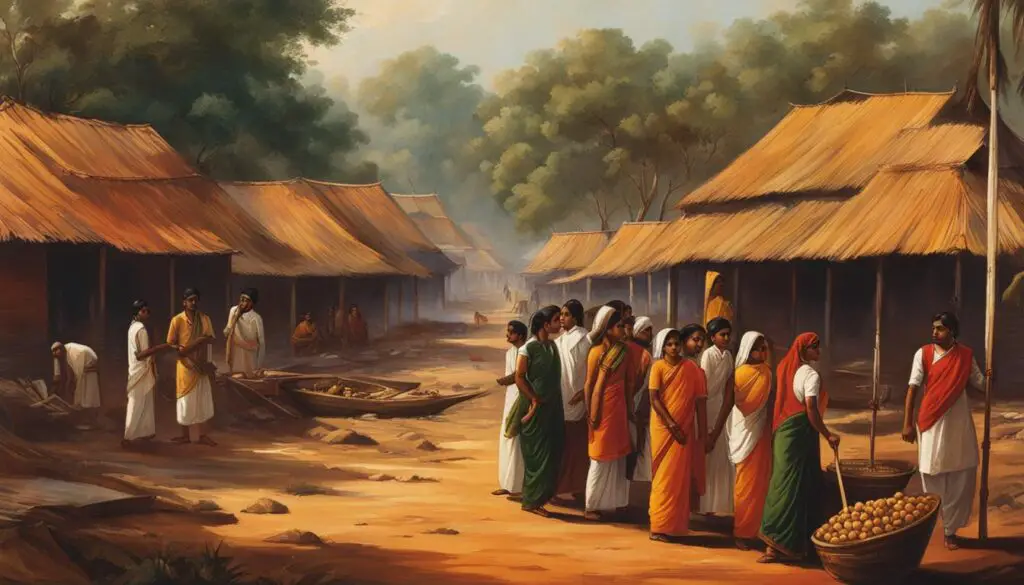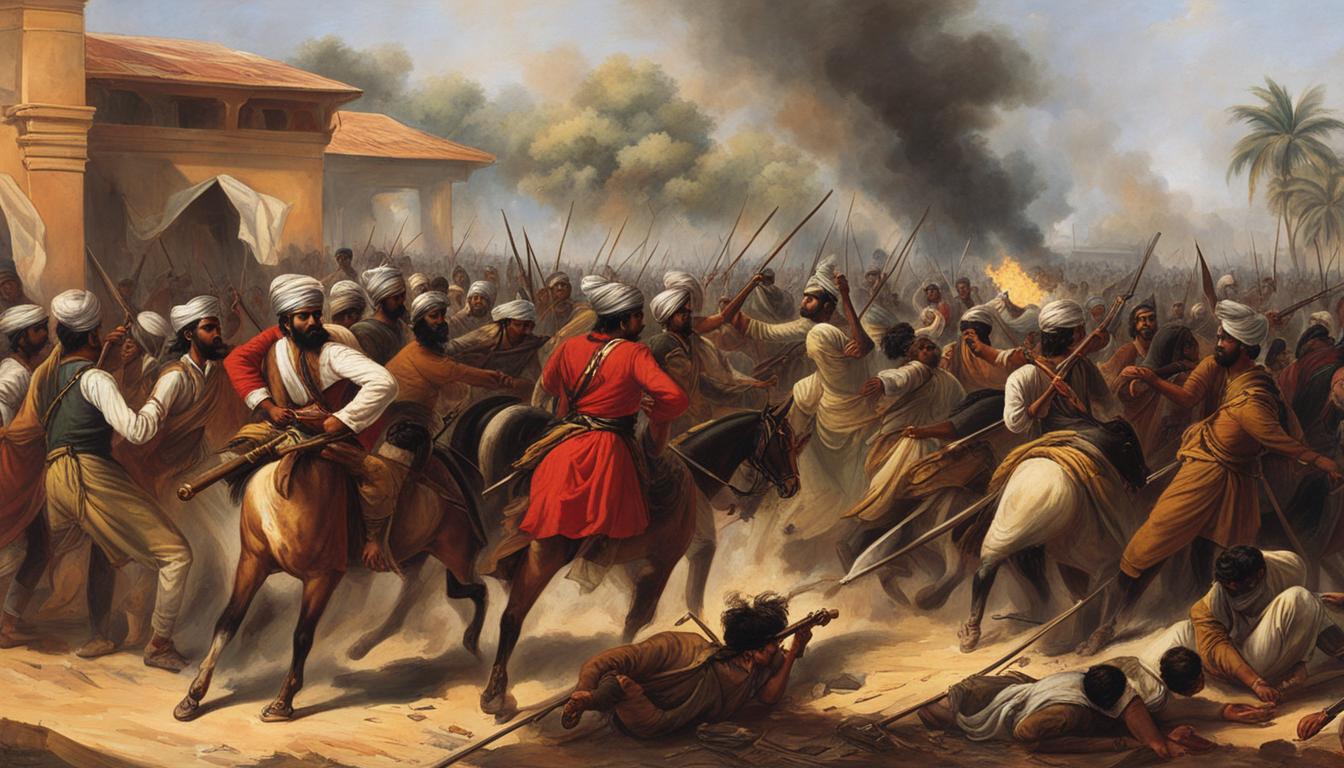The Mappila Rebellion, also known as the Moplah Rebellion, was a significant uprising against British colonial rule and the prevailing feudal system in the southern part of the old Malabar district of present-day Kerala, India. The rebellion started as a resistance against British colonial rule and the elite Hindu landlords who controlled the feudal system in the region. It was a popular uprising primarily driven by peasant grievances and discontent.
The rebels targeted symbols and institutions of the colonial state, such as telegraph lines, train stations, courts, and post offices. The rebellion lasted for six months, spanning over 2,000 square miles of the South Malabar region. The British colonial government ultimately suppressed the rebellion with the help of troops and imposed martial law. Historians have debated whether the rebellion was driven by religious fanaticism or agrarian grievances. While the Indian National Congress initially disowned the movement, some contemporary evaluations now view it as a national upheaval against colonial rule and a significant event in Malabar’s political movement.
Key Takeaways:
- The Mappila Revolt was a major uprising against British colonial rule in the Malabar region of India.
- It was primarily driven by peasant grievances and discontent against the feudal system controlled by Hindu landlords.
- The rebellion targeted symbols and institutions of the colonial state.
- Historians have debated the motives behind the rebellion, with some attributing it to religious fanaticism and others to agrarian grievances.
- While initially disowned by the Indian National Congress, the revolt is now regarded as a significant event in Malabar’s political movement.
Causes of the Mappila Revolt
The Mappila Revolt, also known as the Moplah Rebellion, was spurred by various factors that fueled the discontent among the Mappila Muslims in the southern region of Malabar. Economic struggles played a significant role in the uprising, as the predominantly agrarian Mappila community faced high rents and a lack of security in terms of land tenure. The prevailing feudal system, controlled by Hindu landlords, intensified their economic grievances. The Mappilas also found themselves entangled in the broader political and religious currents of the time.
The Khilafat Movement, which aimed to restore the caliphate in Turkey, stirred communal sentiments among the Mappilas. This movement fueled their resistance against the British colonial rulers and Hindu landlords, providing a unifying cause for the rebellion. Additionally, the British policy of divide and rule, which pitted different communities against each other, created tensions and further contributed to the uprising.
“The Mappila Revolt was a response to the socio-economic disparities and political repressions faced by the Mappila Muslims, aggravated by the Khilafat Movement and the divide and rule policies of the British.” – Historian X
While there is ongoing debate among historians regarding the primary causes of the Mappila Revolt, it is evident that a combination of economic grievances, religious fervor, and resistance to British rule played pivotal roles. Understanding these causes is crucial for comprehending the complex dynamics that led to this significant uprising against colonial dominance.
Economic Discontent among the Mappila Muslims
The Mappila community, predominantly engaged in agriculture, faced immense economic hardships. They struggled with exorbitant rents and a lack of secure land tenure. This economic instability fostered resentment against the landlords who controlled the feudal system, exacerbating their grievances and discontent.
The Influence of the Khilafat Movement
The Khilafat Movement, which originated to protect the caliphate in Turkey following its dissolution, gained significant support among the Mappila Muslims. The movement’s aim to restore the caliphate resonated strongly with the religious sentiments of the Mappilas and provided them with a common cause for resistance.
Resistance against British Rule and Divide and Rule Policies
The Mappila Revolt can also be seen as a response to the British colonial rule, which sought to maintain control through policies of division. Tensions between different communities were deliberately stoked, creating further discontent among the Mappila Muslims who felt marginalized and oppressed.
| Causes | Description |
|---|---|
| Economic Discontent | High rents and lack of security of tenure in the feudal system |
| Khilafat Movement | Communal sentiment incited by the movement’s objective to restore the caliphate |
| Resistance to British Rule | Response to the oppression and divide and rule policies employed by the British colonial rulers |
The convergence of economic grievances, religious fervor driven by the Khilafat Movement, and resistance to British rule collectively led to the eruption of the Mappila Revolt. These factors intertwined to ignite a significant uprising and shape the course of Indian history.

Course and Consequences of the Mappila Revolt
The Mappila Revolt, which began in August 1921 and lasted for six months, had significant course and consequences in the Malabar region of present-day Kerala, India.
Under the leadership of Ali Musaliyar and Variyankunnath Kunjahammed Haji, the rebels gained control over large parts of the region and carried out acts of violence against Hindus, resulting in the destruction of homes and temples.
The rebellion also witnessed clashes between the rebels and British officials, as well as the British-controlled police force.
In November 1921, a tragic event known as the Wagon Tragedy occurred, where 67 Mappila prisoners died of suffocation while being transported.
To suppress the rebellion, the British authorities deployed troops and imposed martial law.
The consequences of the Mappila Revolt were far-reaching. While it was the last major Mappila uprising, it marked a turning point in the history of the Muslim community in the region.
Additionally, the revolt led to changes in land ownership and tenancy rights, as well as heightened communal tensions.
Overall, the Mappila Revolt had a significant impact on the social and political landscape of the Malabar region.

Conclusion
The Mappila Revolt of 1921-1922 stands as a defining moment in Indian history. This significant uprising against British colonial rule and the prevailing feudal system in the Malabar region of present-day Kerala showcased the deep-rooted economic grievances, religious fervor, and resistance to British rule. While contemporary assessments of the rebellion varied, it is now recognized as a national upheaval against colonial rule and a pivotal event in the history of resistance movements in India.
The consequences of the Mappila Revolt were far-reaching, particularly for the Muslim community. It led to notable changes in land ownership and tenancy rights, consolidating their struggles and aspirations. The rebellion shed light on the challenges faced by peasants, sparked conversations about the rights and independence of marginalized communities, and fueled the calls for freedom and self-governance from British rule in India.
As an enduring legacy, the Mappila Revolt remains a testament to the resilience and determination of the people. It serves as a powerful reminder of the need to address economic disparities, religious tensions, and colonial oppression, and contributed significantly to the trajectory of resistance movements in India. The Mappila Revolt holds its rightful place in the annals of Indian history, forever etched as a defining moment that shaped the fight for independence and social justice.
FAQ
What was the Mappila Revolt?
The Mappila Revolt, also known as the Moplah Rebellion, was a significant uprising against British colonial rule and the prevailing feudal system in the southern part of the old Malabar district of present-day Kerala, India.
What were the causes of the Mappila Revolt?
The Mappila Revolt had multiple causes, including economic discontent among the Mappila Muslims, the influence of the Khilafat Movement, and resistance to British rule and the Hindu landlords who controlled the feudal system in the region.
What was the course of the Mappila Revolt?
The Mappila Revolt began in August 1921 and lasted for six months. The rebels, led by Ali Musaliyar and Variyankunnath Kunjahammed Haji, gained control over large parts of the Malabar region and engaged in large-scale violence against Hindus. The rebellion was ultimately suppressed by the British colonial government with the help of troops and martial law.
What were the consequences of the Mappila Revolt?
The Mappila Revolt had far-reaching consequences, leading to changes in land ownership and tenancy rights in the region. It also had a significant impact on resistance movements in India, highlighting the struggles faced by peasants and fueling calls for independence from British rule.
